Explosive Ordnance Disposal in Laos 1995
 In January 1995 I travelled around the world from my home in California, stopping in Pennsylvania, England and Laos. The purpose of the trip was to learn about the process of explosive ordnance disposal being used in Laos so that I could help develop the resources to keep the project going. Mennonite Central Committee had begun the project, but knew it could not hope to make enough land safe without the participation of governments or other large donors. The project is now a program of the Lao People's Democratic Republic funded through a United Nations Development Program trust fund. More than 1,000 workers are engaged in the process of returning land to the people. Their 2009 work plan is available, including an enlightening map showing bombed areas. Mines Advisory Group, the people who partnered with MCC to do the work, maintains a web site about the ongoing efforts in Laos. The MCC web site also has much interesting material about the project and the worldwide effort against unexploded ordnance. MCC's timeline of the Laos project shows how long-term these efforts have been. The Cluster Munition Coalition web site tracks the cluster bomb ban treaty. Here on Peacemaking.com you will find some of my personal photos and commentary. --Duane Ruth-Heffelbower | |||
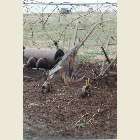 MCC's office in Pennsylvania is in Amish country. While there for orientation I looked at animal-drawn implements that might be suitable for bombie removal. The potato diggers looked about right. How to draw one across a field without blowing up both it and the people using it would be the trick. |
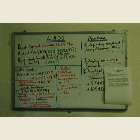 On to Cockermouth, England, the home of Mines Advisory Group (MAG), MCC's contractor in Laos. Cockermouth is on the west side of the island on the border with Scotland. This whiteboard lists the MCC project and others. |
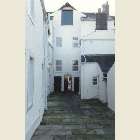 The MAG office is in this very quaint building. |
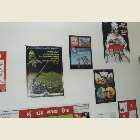 The artwork on the walls is mine-awareness posters from various countries. |
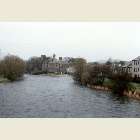 The route to Cockermouth was NY to Amsterdam, Amsterdam to Manchester on the east side of the island, then overland by car. The drive is picturesque if anything with rolling hills, sheep and Hadrian's Wall. |
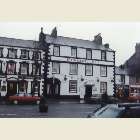 Cockermouth's main claim to fame is its most famous resident, William Wordsworth. We stayed in the Wordsworth Hotel. |
 My travel companion was Byron Peachey, who is shown here checking out of the hotel. |
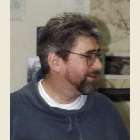 Rae McGrath was the head of MAG. He is still active in the worldwide movement against cluster bombs and mines. |
 We flew back to Amsterdam, then non-stop to Bangkok where we stayed at the Bangkok Christian Guesthouse, sharing it with this parrot. |
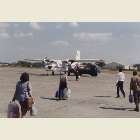 From Bangkok we flew to Vientiane, then on this plane to Phonsavanh, capital of Xieng Khouang Province. |
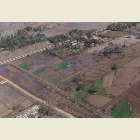 Leaving Vientiane the land looks like many places in Asia, divided into rice paddies. |
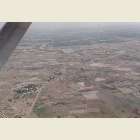 Laos from the air looked about as prosperous as anyplace. |
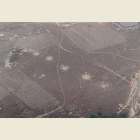 But as we approached Xieng Khouang the landscape suddenly changed. Bomb craters were thick. This row of craters was probably the work of a B-52. |
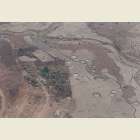 Craters are 20-30 feet across, as big as a house. |
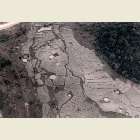 25-30 year-old craters in rice paddies were a surprise for me. I had thought they would have been worked back into the land. But the dirt was thrown so far, and the level of the land is so critical for irrigation, that they just stay. Unfortunately, the water in them is laced with chemicals from the bombs. |
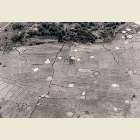 Xieng Khouang is the most heavily bombed place on earth. Partly to deny it as a sanctuary, but partly, I learned from a friend who dropped some of the bombs, so that planes unable to find a target had a place to clean their wings before landing at the base in Thailand. |
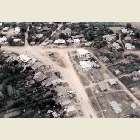 Phonsavanh is a lot different from Vientiane. There were no buildings standing in the province when the bombing ended after nine years. The equivalent of a planeload of bombs was dropped on the province every 7 minutes for nine years. |
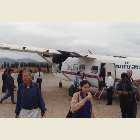 The plane was also quaint, but we made it. |
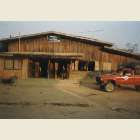 This is the air terminal building in Phonsavanh. I heard later that cluster bomblets had been found right next to it where we had been standing. |
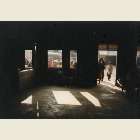 This is the baggage claim area. Luggage is brought to the window on the left. |
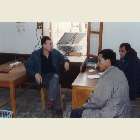 Three MAG staff people at the office outside Phonsavanh. On the left is one of three British EOD experts. The men on the right handle logistics and translation. |
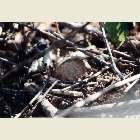 A bombie lies camouflaged by leaves and sticks. |
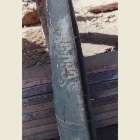 This is a cluster bomb canister. They are used to build fences, small bridges, and to hold up rice storage houses. |
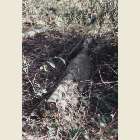 A different type of cluster bomb unit designed to shoot bomblets out of the tubes. It is still full and took several days to destroy. |
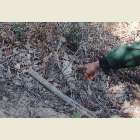 More bomblets on the edge of a crater where recyclers put them. |
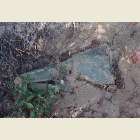 This canister also landed full, and people have been trying to recover the metal. A temptation that results in many deaths. |
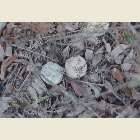 Bombies from that canister. |
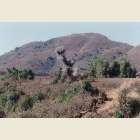 This photo and the next four are an explosion we made blowing up a bombie with 500 grams of dynamite. |
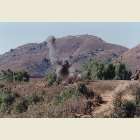 It is not safe to move bombies, so they are blown up where they are found. |
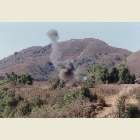 The combination of many different fusing mechanisms and over 20 years on the ground have made them unstable. |
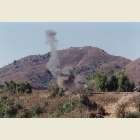 The dud rate is high for many reasons, but our finding full canisters suggests they were dropped from too low and didn't have time to open. The bombies themselves are armed by spinning after release from the canister, and they must spin enough. Landing in a soft rice paddy might also result in a dud. |
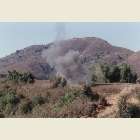 How far must one be from one of these explosions to be safe? The bombie casing is designed to fragment into razor sharp shrapnel. We were usually 300 yards or so away behind the trucks. One time I had shrapnel whiz past my head when I was nearly 500 yards away. |
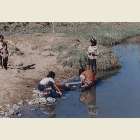 These children were washing clothes near one of the places we worked. It is difficult to clear the area of people since watching the demining crew is so interesting. |
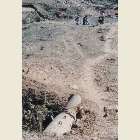 This canister by the path to the river was still full. |
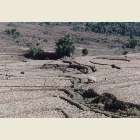 Deminers work either as roving teams, going to places where people report UXO, or mark off areas to work with metal detectors and probes for subsurface devices. Across these fields and up the hill is another full canister. |
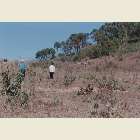 The path we will follow connects two villages, and a canister has landed intact, then spilled its contents across the path. |
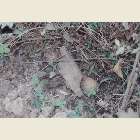 See the bombies? |
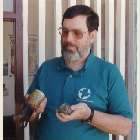 Here I am looking at the two types of bombie we saw most often while I was there. Someone risked their life to remove the explosive from these. There is no safe way to do it. |
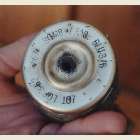 The end cap of the yellow one in my right hand. The canisters we saw by the hundreds had tags showing where they were made and their expiration date. The ones I checked came from Arkansas. |
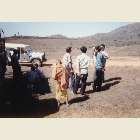 Villagers and our crew talking after finishing up the village's exposed ordnance. |
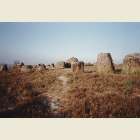 The Plain of Jars and its jars. This is a tourist attraction, being a large plain covered with stone jars. No one knows why they are there. |
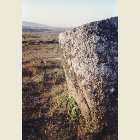 One of the jars. They are large enough for someone to get inside, and they are empty. |
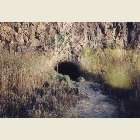 One of the caves where farmers lived during the bombing. I spoke with a person who lived in one of these caves, farming only at night, for all the years of bombing. |
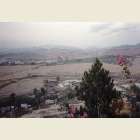 There is a nice hotel on this hilltop overlooking Phonsavanh. |
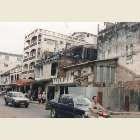 The remaining photos were taken in Vientiane on our way home. |
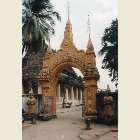 Buddhist art and cultural practices are everywhere, although the government does not encourage religious practice. Monks are a common sight. |
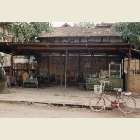 This is a typical roadside restaurant. |
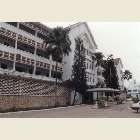 Government buildings are simple and large. This is one in which we visited officials. |
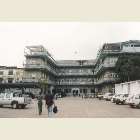 Another government office. |
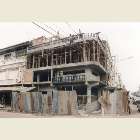 Construction like this is a common sight. Reinforced columns with poured concrete floors is the normal method. |
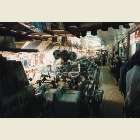 This store is actually more like a mall. It is set up in the usual market style but all under one roof. Note the treadle sewing machines. |
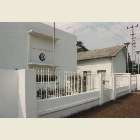 The U.S. Embassy where we met with the ambassador. |
Cluster bombs, the type of unexploded ordnance most often encountered in Laos, are different from other weapons because we know statistically that they will kill civilians, usually women and children. Even the most optimistic dud rates leave many bomblets waiting for the hoe, machete, or playing child which sets them off. Because of this the decision to use cluster munitions is a decision to kill noncombatant women and children long after the battle is over. I am hopeful that the developed nations will recognize the barbarity of these weapons and stop using them. The video below was produced in 1995 for Mines Advisory Group, the people with whom I worked in Laos.This short video shows the deployment of a large load of cluster bombs.http://www.youtube.com/watch?v=bYXdk-qTl5UThis short video shows the destruction of two BLU-26 bombletsMaintained by Duane Ruth-Heffelbower. Last update August 17, 2010. | |||